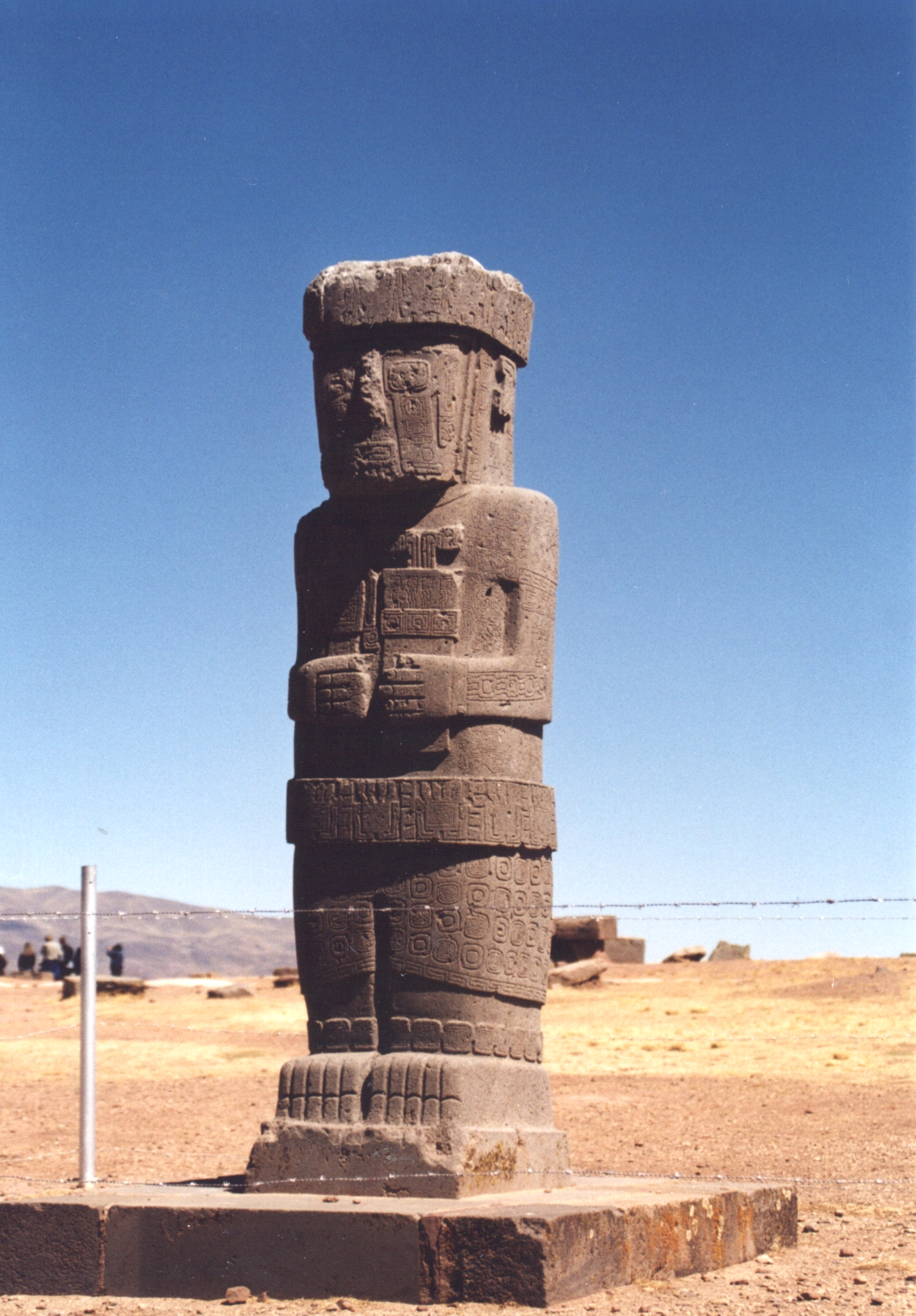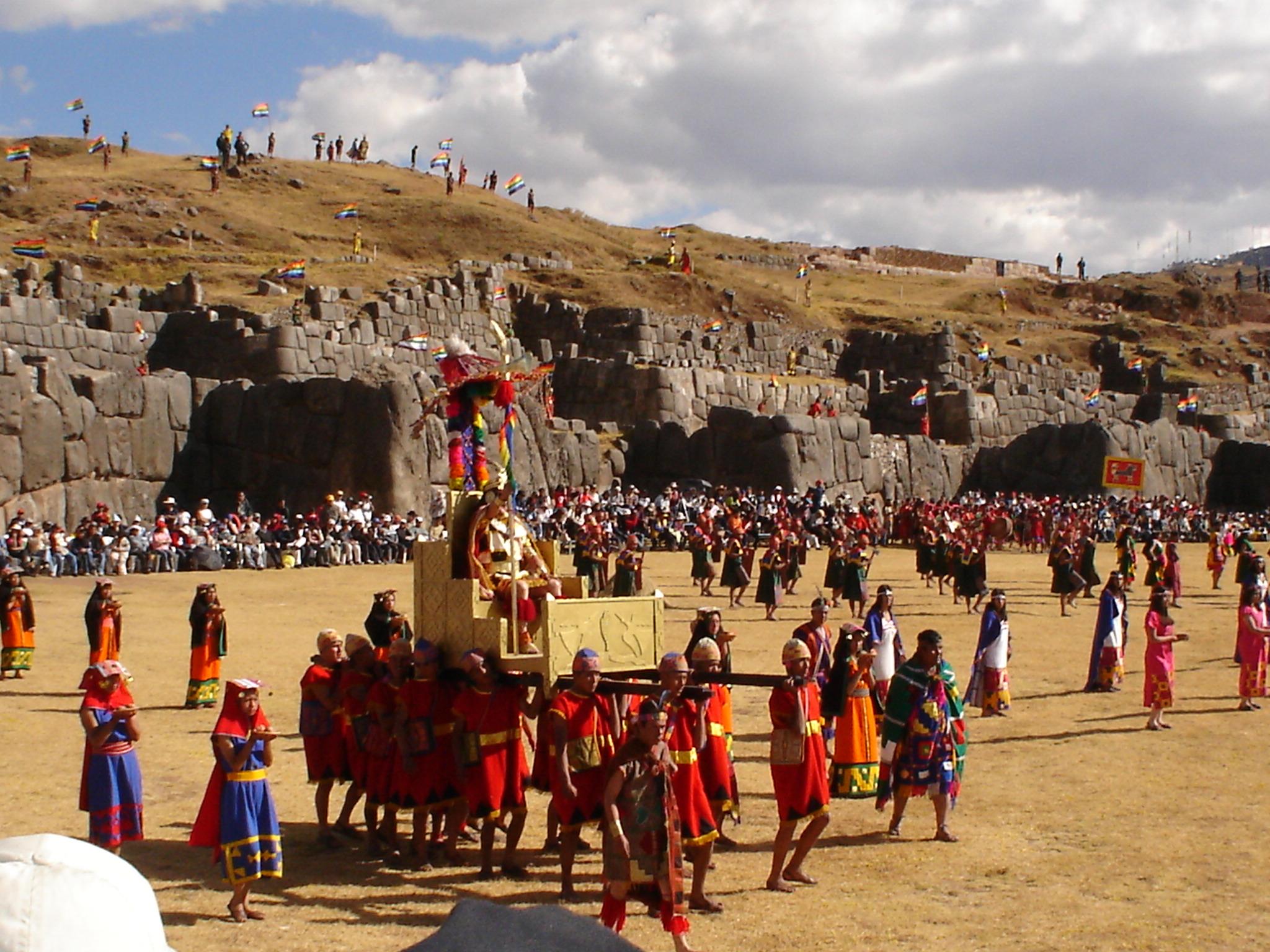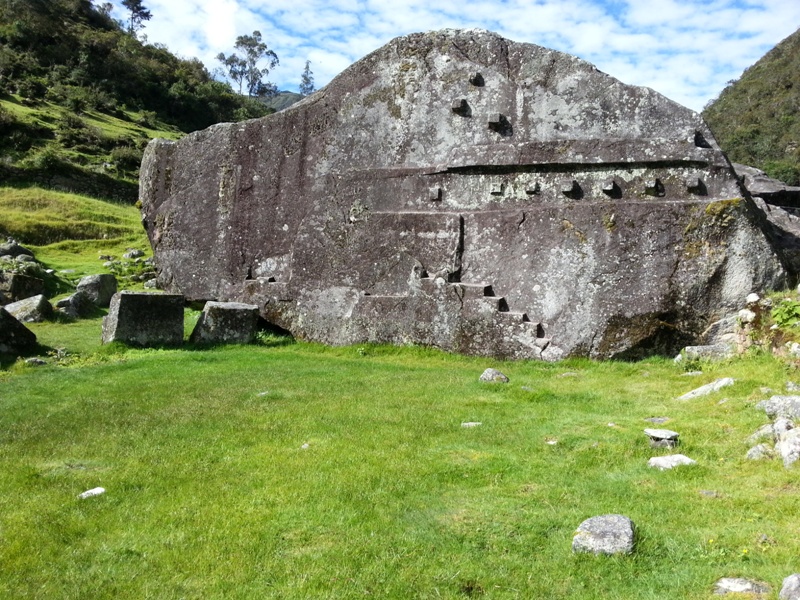|
Inca
The Inca Empire, officially known as the Realm of the Four Parts (, ), was the largest empire in pre-Columbian America. The administrative, political, and military center of the empire was in the city of Cusco. The History of the Incas, Inca civilisation rose from the Peruvian highlands sometime in the early 13th century. The Portuguese explorer Aleixo Garcia was the first European to reach the Inca Empire in 1524. Later, in 1532, the Spanish Empire, Spanish began the conquest of the Inca Empire, and by 1572 Neo-Inca State, the last Inca state was fully conquered. From 1438 to 1533, the Incas incorporated a large portion of western South America, centered on the Andes, Andean Mountains, using conquest and peaceful assimilation, among other methods. At its largest, the empire joined modern-day Peru with what are now western Ecuador, western and south-central Bolivia, northwest Argentina, the southwesternmost tip of Colombia and Incas in Central Chile, a large portion of modern- ... [...More Info...] [...Related Items...] OR: [Wikipedia] [Google] [Baidu] |
Pachacuti
Pachacuti Inca Yupanqui, also called Pachacútec (), was the ninth Sapa Inca of the Chiefdom of Cusco, which he transformed into the Inca Empire (). Most archaeologists now believe that the famous Inca site of Machu Picchu was built as an estate for Pachacuti.Rowe, John, 1990, "Machu Picchu a la luz de documentos de siglo XVI", ''Historia'' 16 (1), 139–154. In Quechua, the cosmogonical concept of '' pachakutiy'' means "the turn of the world" and ''yupanki'' could mean "honorable lord". During his reign, Cusco grew from a hamlet into an empire that could compete with, and eventually overtake, the Chimú empire on the northern coast. He began an era of conquest that, within three generations, expanded the Inca dominion from the valley of Cusco to a sizeable part of western South America. According to the Inca chronicler Garcilaso de la Vega, Pachacuti created the Inti Raymi to celebrate the new year in the Andes of the southern hemisphere. Pachacuti is often linked to th ... [...More Info...] [...Related Items...] OR: [Wikipedia] [Google] [Baidu] |
History Of The Incas
The Incas were most notable for establishing the Inca Empire which was centered in modern-day South America in Peru and Chile. It was about from the northern to southern tip. The Inca Empire lasted from 1438 to 1533. It was the largest Empire in America throughout the Pre-Columbian era. The Inca state was originally founded by Manco Capac in the early 1200s, and is known as the Kingdom of Cuzco. Under subsequent rulers, through strategic alliances and conquests, it expanded beyond Cusco and into the Sacred Valley. Their territory then rapidly grew under the 9th Sapa Inca (emperor), Pachacuti and his descendents. Over the course of the Inca Empire, the Inca used conquest and peaceful assimilation to incorporate the territory of modern-day Peru, followed by a large portion of western South America, into their empire, centered on the Andes, Andean mountain range. However, shortly after the Inca Civil War, the last Sapa Inca of the Inca Empire, Atahualpa, was captured and killed on ... [...More Info...] [...Related Items...] OR: [Wikipedia] [Google] [Baidu] |
Spanish Conquest Of The Inca Empire
The Spanish conquest of the Inca Empire, also known as the Conquest of Peru, was one of the most important campaigns in the Spanish colonization of the Americas. After years of preliminary exploration and military skirmishes, 168 Spaniards, Spanish soldiers under conquistador Francisco Pizarro, along with his brothers in arms and their Indigenous peoples of South America, indigenous Indian auxiliaries, allies, captured the last Sapa Inca, Atahualpa, at the Battle of Cajamarca in 1532. It was the first step in a long campaign that took decades of fighting but ended in Spanish victory in 1572 and colonization of the region as the Viceroyalty of Peru. The conquest of the Inca Empire (called "Tahuantinsuyu" or "Tawantinsuyu" in Quechuan languages, Quechua, meaning "Realm of the Four Parts"), led to spin-off campaigns into present-day Chile and Colombia, as well as expeditions to the Amazon basin, Amazon Basin and surrounding rainforest. When the Spanish arrived at the borders of ... [...More Info...] [...Related Items...] OR: [Wikipedia] [Google] [Baidu] |
Atahualpa
Atahualpa (), also Atawallpa or Ataw Wallpa ( Quechua) ( 150226 July 1533), was the last effective Inca emperor, reigning from April 1532 until his capture and execution in July of the following year, as part of the Spanish conquest of the Inca Empire. Biography Atahualpa was the son of the emperor Huayna Cápac, who died around 1525 along with his successor, Ninan Cuyochi, in a smallpox epidemic. Atahualpa initially accepted his half-brother Huáscar as the new emperor, who in turn appointed him as governor of Quito in the north of the empire. The uneasy peace between them deteriorated over the next few years. From 1529 to 1532, they contested the succession in the Inca Civil War, in which Atahualpa's forces defeated and captured Huáscar. Around the same time as Atahualpa's victory, a group of Spanish conquistadors, led by Francisco Pizarro, arrived in the region. In November 1532, they captured Atahualpa during an ambush at Cajamarca. In captivity, Atahualpa gave a ... [...More Info...] [...Related Items...] OR: [Wikipedia] [Google] [Baidu] |
Inca Religion
The Inca religion was a group of beliefs and rites that were related to a mythological system evolving from pre-Inca times to Inca Empire. Faith in the ''Tawantinsuyu'' was manifested in every aspect of his life, work, festivities, ceremonies, etc. They were polytheists and there were local, regional and pan-regional divinities. It has been noted that aspects of the Andean religion extend well beyond the border of the former Inca Empire into the lands of the Mapuches and Huilliches in southern Chile, which has raised the hypothesis whether there is a prior dissemination of Andean religion from Tiwanaku. Duality A theme in Inca mythology is the duality of the Cosmos. The realms were separated into the upper and lower realms, the ''hanan pacha'' and the ''ukhu pacha'' and ''urin pacha''. ''Hanan pacha'', the upper world, consisted of the deities of the sun, moon, stars, rainbow, and lightning while ''ukhu pacha'' and ''urin pacha'' were the realms of Pachamama, the earth mot ... [...More Info...] [...Related Items...] OR: [Wikipedia] [Google] [Baidu] |
Sapa Inca
The Sapa Inca (from ; ) was the monarch of the Inca Empire (''Tawantinsuyu'' "the region of the four [provinces]"), as well as ruler of the earlier Kingdom of Cusco and the later Neo-Inca State at Vilcabamba, Peru, Vilcabamba. While the origins of the position are mythical and originate from the Origin myth, legendary foundation of the city of Cusco, it seems to have come into being historically around AD 1100. Although the Inca believed the Sapa Inca to be the son of Inti (the Solar deity, Sun god) and often referred to him as ''Inti churi'' "solar son" or ''Intip churin'' "son of the Sun", the position eventually became Hereditary monarchy, hereditary, with Primogeniture#Agnatic primogeniture, son succeeding father. The principal wife of the Inca was known as the Qoya, coya or ''quya''. The Sapa Inca was at the top of the social hierarchy, and played a dominant role in the political and spiritual realm. Manco Capac, the first Inca monarch, adopted the title ''capac'' or ''qhap ... [...More Info...] [...Related Items...] OR: [Wikipedia] [Google] [Baidu] |
Cusco
Cusco or Cuzco (; or , ) is a city in southeastern Peru, near the Sacred Valley of the Andes mountain range and the Huatanay river. It is the capital of the eponymous Cusco Province, province and Cusco Region, department. The city was the capital of the Inca Empire until the 16th-century Spanish conquest of Peru, Spanish conquest. In 1983, Cusco was declared a World Heritage Site by UNESCO with the title "Historic Centre of Cusco, City of Cusco". It has become a major tourist destination, hosting over 2 million visitors a year and providing passage to numerous Incan ruins, such as Machu Picchu, one of the Seven modern wonders of the world and many others. The Constitution of Peru (1993) designates the city as the Historical Capital of Peru. Cusco is the list of cities in Peru, seventh-most populous city in Peru; in 2017, it had a population of 428,450. It is also the largest city in the Peruvian Andes and the region is the seventh-most populous List of metropolitan areas ... [...More Info...] [...Related Items...] OR: [Wikipedia] [Google] [Baidu] |
Neo-Inca State
The Neo-Inca State, also known as the Neo-Inca state of Vilcabamba, was the Inca state established in 1537 at Vilcabamba, Peru, Vilcabamba by Manco Inca Yupanqui (the son of Inca emperor Huayna Capac). It is considered a rump state of the Inca Empire (1438–1533), which collapsed after the Spanish conquest of Peru, Spanish conquest in the mid-1530s. The Neo-Inca State lasted until 1572, when the last Inca stronghold was conquered, and the last ruler, Túpac Amaru (Manco's son), was captured and executed, thus ending the political authority of the Inca state. History Inca retreat to Vilcabamba The Vilcabamba region had been part of the Inca Empire since the reign of Pachacuti (1438–1471). During the Spanish conquest of Peru, Túpac Huallpa was a puppet state, puppet ruler crowned by the conquistador Francisco Pizarro. After his death, Manco Inca Yupanqui joined Francisco Pizarro and Diego de Almagro in Cajamarca. When Pizarro's force arrived in Cusco, he had the ''cacique ... [...More Info...] [...Related Items...] OR: [Wikipedia] [Google] [Baidu] |
Huayna Capac
Huayna Capac (; Cuzco Quechua: ''Wayna Qhapaq'' ) (before 14931527) was the third Sapa Inca of Tawantinsuyu, the Inca Empire. He was the son of and successor to Túpac Inca Yupanqui,Sarmiento de Gamboa, Pedro; 2015, originally published in Spanish in 1572, History of the Incas the sixth Sapa Inca of the Hanan dynasty, and eleventh of the Inca civilization. He was born in Tumipampa and tutored to become Sapa Inca from a young age. Tawantinsuyu reached its greatest extent under Huayna Capac, as he expanded the empire's borders south along the Chilean coast, and north through what is now Ecuador and southern Colombia. According to the priest Juan de Velasco he absorbed the Quito Confederation into his empire by marrying Queen Paccha Duchicela, halting a long protracted war. Huayna Capac founded the city Atuntaqui and developed the city Cochabamba as an agriculture and administrative center. The Sapa Inca greatly expanded the Inca road system and had many qullqa (storeho ... [...More Info...] [...Related Items...] OR: [Wikipedia] [Google] [Baidu] |
Inca Civil War
The Inca Civil War, also known as the Inca Dynastic War, the Inca War of Succession, or, sometimes, the War of the Two Brothers, was fought between half-brothers Huáscar and Atahualpa, sons of Huayna Capac, over succession to the throne of the Inca Empire.Prescott, W.H., 1827, ''The History of the Conquest of Peru,'' Digireads.com Publishing, Hemming, ''The Conquest'', p. 29. The war followed Huayna Capac's death. It began in 1529, and lasted until 1532. Huáscar initiated the war; appointed as emperor and claiming the throne, he wanted to defeat Atahualpa's competition. Atahualpa was tactically superior to his brother in warcraft and to the mighty armies of Cusco, which their father had stationed in the north part of the empire during the military campaign.MacQuarrie, ''The Last Days'', p. 50. Accounts from sources all vary in the exact details. Following Atahualpa's victory, Spanish forces led by Francisco Pizarro invaded this region. He ultimately captured and killed Atahu ... [...More Info...] [...Related Items...] OR: [Wikipedia] [Google] [Baidu] |
Peru
Peru, officially the Republic of Peru, is a country in western South America. It is bordered in the north by Ecuador and Colombia, in the east by Brazil, in the southeast by Bolivia, in the south by Chile, and in the south and west by the Pacific Ocean. Peru is a Megadiverse countries, megadiverse country, with habitats ranging from the arid plains of the Pacific coastal region in the west, to the peaks of the Andes mountains extending from the north to the southeast of the country, to the tropical Amazon basin rainforest in the east with the Amazon River. Peru has Demographics of Peru, a population of over 32 million, and its capital and largest city is Lima. At , Peru is the List of countries and dependencies by area, 19th largest country in the world, and the List of South American countries by area, third largest in South America. Pre-Columbian Peru, Peruvian territory was home to Andean civilizations, several cultures during the ancient and medieval periods, and has one o ... [...More Info...] [...Related Items...] OR: [Wikipedia] [Google] [Baidu] |
Tupac Yupanqui
Topa Inca Yupanqui or Túpac Inca Yupanqui (), also Topa Inga Yupangui, erroneously translated as "noble Inca accountant" (before 14711493) was the tenth Sapa Inca (1471–1493) of the Inca Empire, fifth of the Hanan dynasty. His father was Pachacuti, and his son was Huayna Capac. Topa Inca belonged to the ''Qhapaq Panaca'' (one of the clans of Inca nobles). His quya (principal wife) was his older sister, Mama Ocllo.de Gamboa, P.S., 2015, History of the Incas, Biography His father appointed him to head the Inca army before his reign as emperor, granting him the title of Auqui, or crown prince, at a young age. Topa Inca launched multiple large-scale expeditions to the north during his period as Auqui, subduing regions such as Hatun Xauxa, the Bombon Plateau, and Huaylas. Cities and sites the army he commanded besieged and captured at this time include Curamba, Huaylla-Pucara, Canta, and, most importantly, Chan Chan. He extended the realm along the Andes through modern Ec ... [...More Info...] [...Related Items...] OR: [Wikipedia] [Google] [Baidu] |






